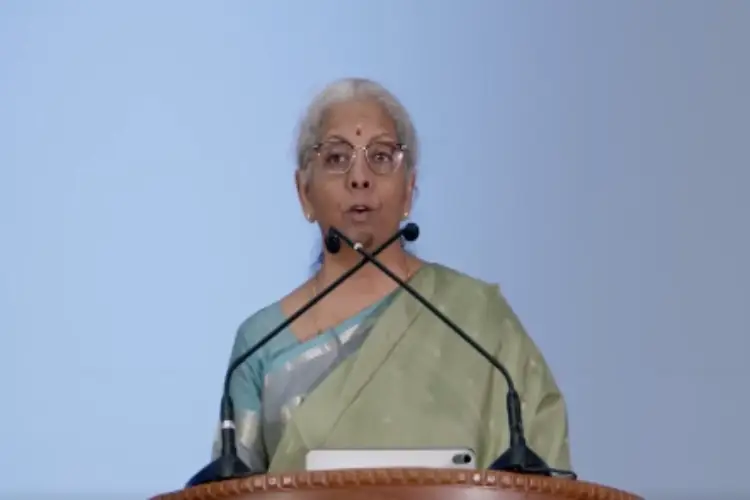
New Delhi
Finance Minister Nirmala Sitharaman has said that the government is keeping a 'good watch' on exchange rates, stressing that besides rupee several other currencies have depreciated against the US dollar.
"The rupee slide is largely against the dollar, not against any other currencies. That's also because of the way globally, the dollar has strengthened," she said when asked if the slide of rupee against greenback is a concern.
"This is not the case only with rupee versus dollar, it's the case with many other currencies versus the dollar. So we are keeping a good watch on this," she told PTI in an interview.
The rupee plummeted to a record low and closed at 88.27 against dollar after touching an intra-day low of 88.38 on Friday. The fall came amid concerns over US tariffs, while intervention by the Reserve Bank of India through state-run banks helped limit further losses.
The steep tariff of 50 per cent imposed by the US on Indian goods took effect on August 27. The tariffs - among the highest in the world - include a 25 per cent penalty for buying crude oil from Russia.
On August 7, President Donald Trump administration enforced a 25 per cent tariff on Indian goods, citing India's persistent oil imports from Russia and long-standing trade barriers.
The sectors which are impacted due to high import duties include textiles/ clothing, gems and jewellery, shrimp, leather and footwear, animal products, chemicals, and electrical and mechanical machinery.
Sectors such as pharma, energy products and electronic goods are out of the ambit of these sweeping duties. The US accounted for about 20 per cent of India's USD 437.42 billion worth of goods exports in 2024-25.
The US has been the largest trading partner of India since 2021-22. In 2024-25, the bilateral trade in goods stood at USD 131.8 billion (USD 86.5 billion exports and USD 45.3 billion imports).
Calling the landmark GST overhaul a 'people's reform', Sitharaman said that rationalisation of tax rates for a wide swath of products will benefit every family, boost consumption, and bolster the economy.
The finance minister said, she will personally monitor passing on of goods and services tax (GST) rate cuts in the form of price reduction even as some of the industries have already announced price moderation.
Within days of the decision, from car makers to public sector insurance companies and shoe and apparel brands have already announced significant price cuts and the rest are likely to follow suit by the time new GST rates are implemented, she said.
Nearly 400 products - from soaps to cars, shampoos to tractors and air conditioners - will cost less when the rejig of the GST is effective from the first day of Navaratri on September 22. Premium paid on individual health and life insurance will be tax-free. A third slab of 40 per cent tax has been earmarked for a small list of sin goods and ultra-luxury items.
"This is a reform which touches the lives of all 140 crore people. There is no individual in this country who is untouched by GST. The poorest of the poor also have something small that they buy, touched by GST," she said.
Starting September 22, the GST slab structure will change - 5 per cent for common use goods and 18 per cent for everything else. The existing slab of 12 and 28 per cent rates have been done away with.
In the revamped GST structure, most daily food and grocery items will fall under the 5 per cent GST slab with bread, milk and paneer attracting no tax at all.
Sitharaman said the reform - the single biggest since the 2017 roll-out of the one-nation, one tax regime - has been carried out with a focus on the common man. Every tax on daily use items has gone through a rigorous review and in most cases the rates have come down drastically.
